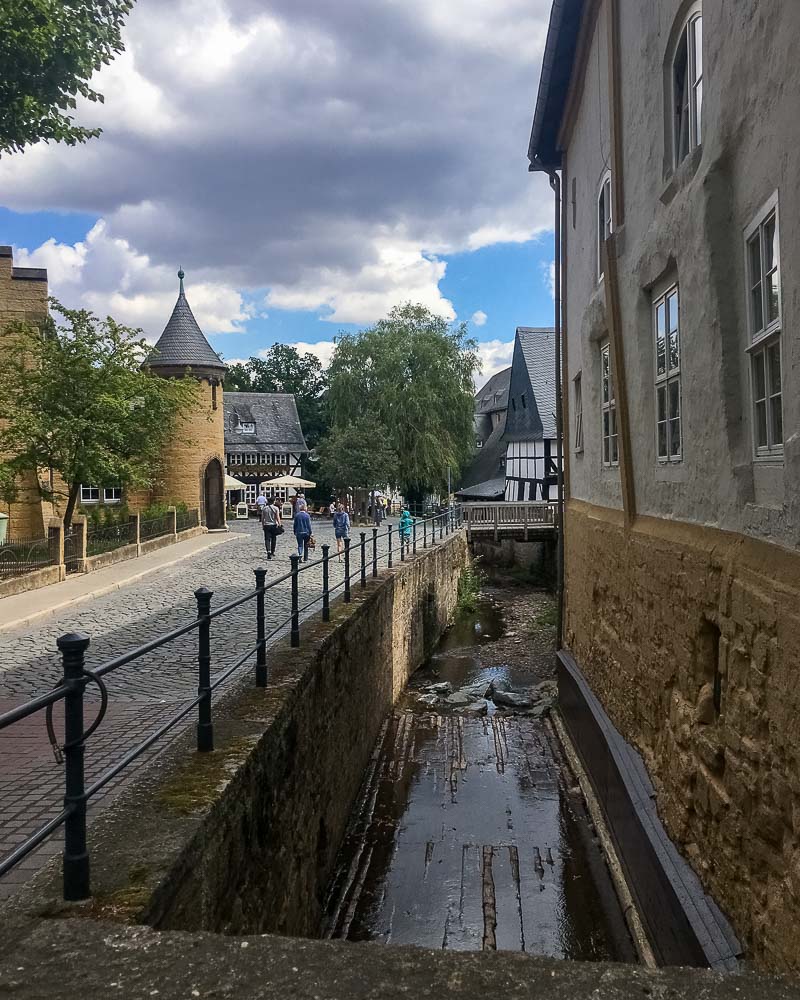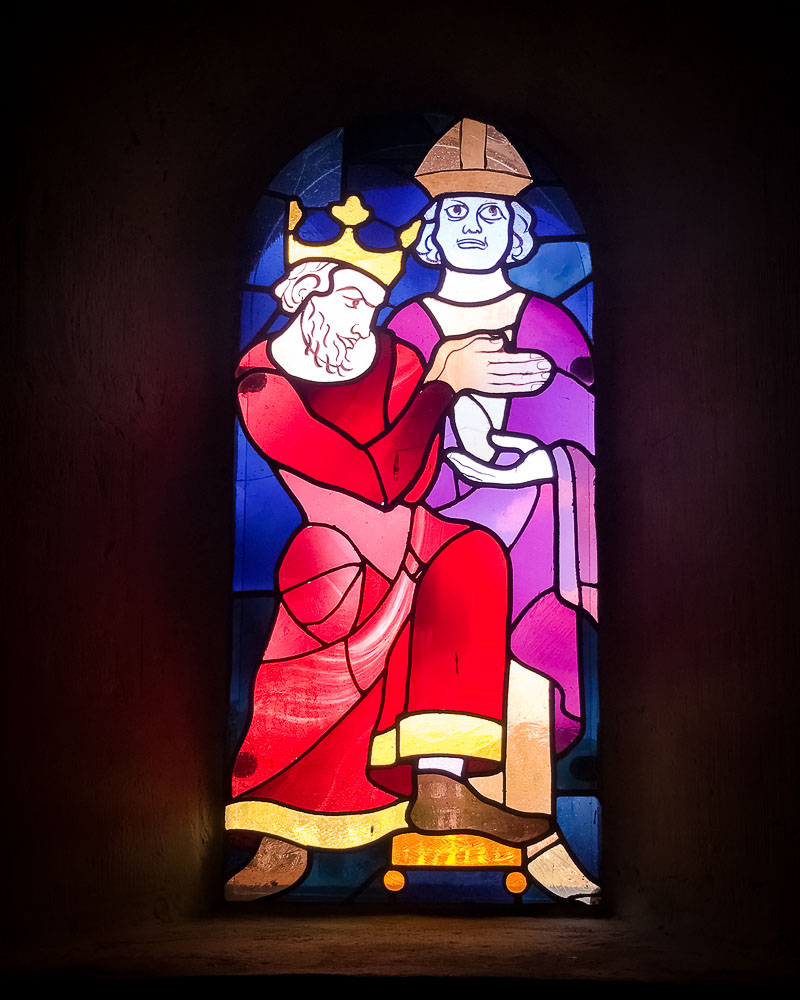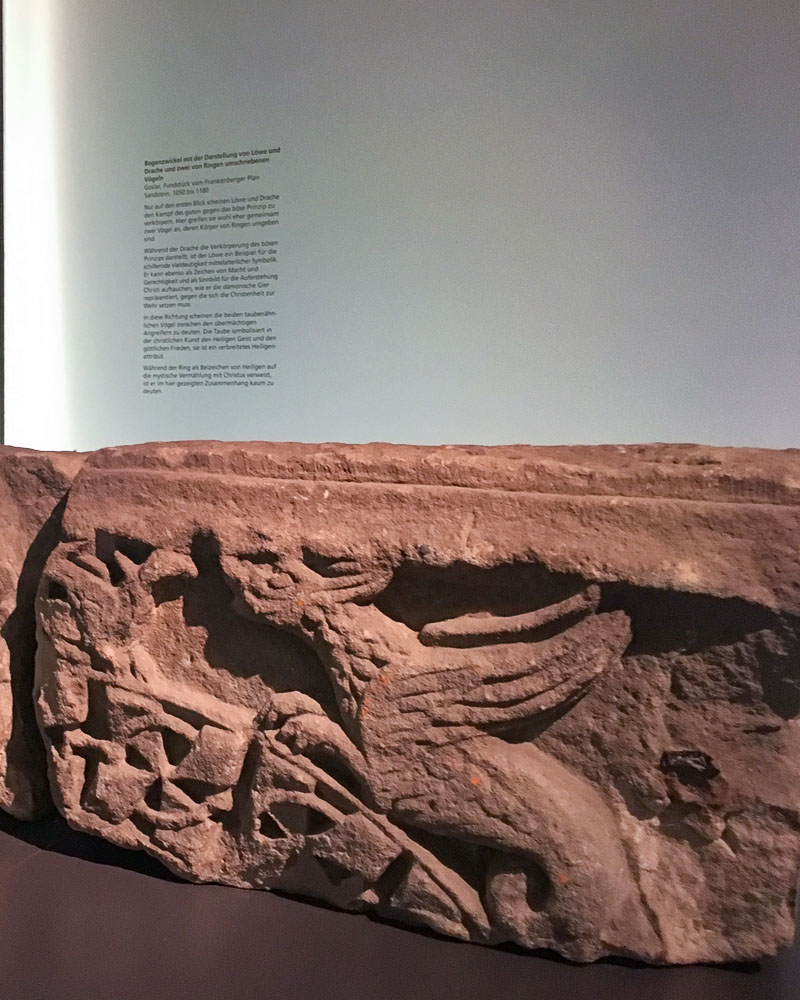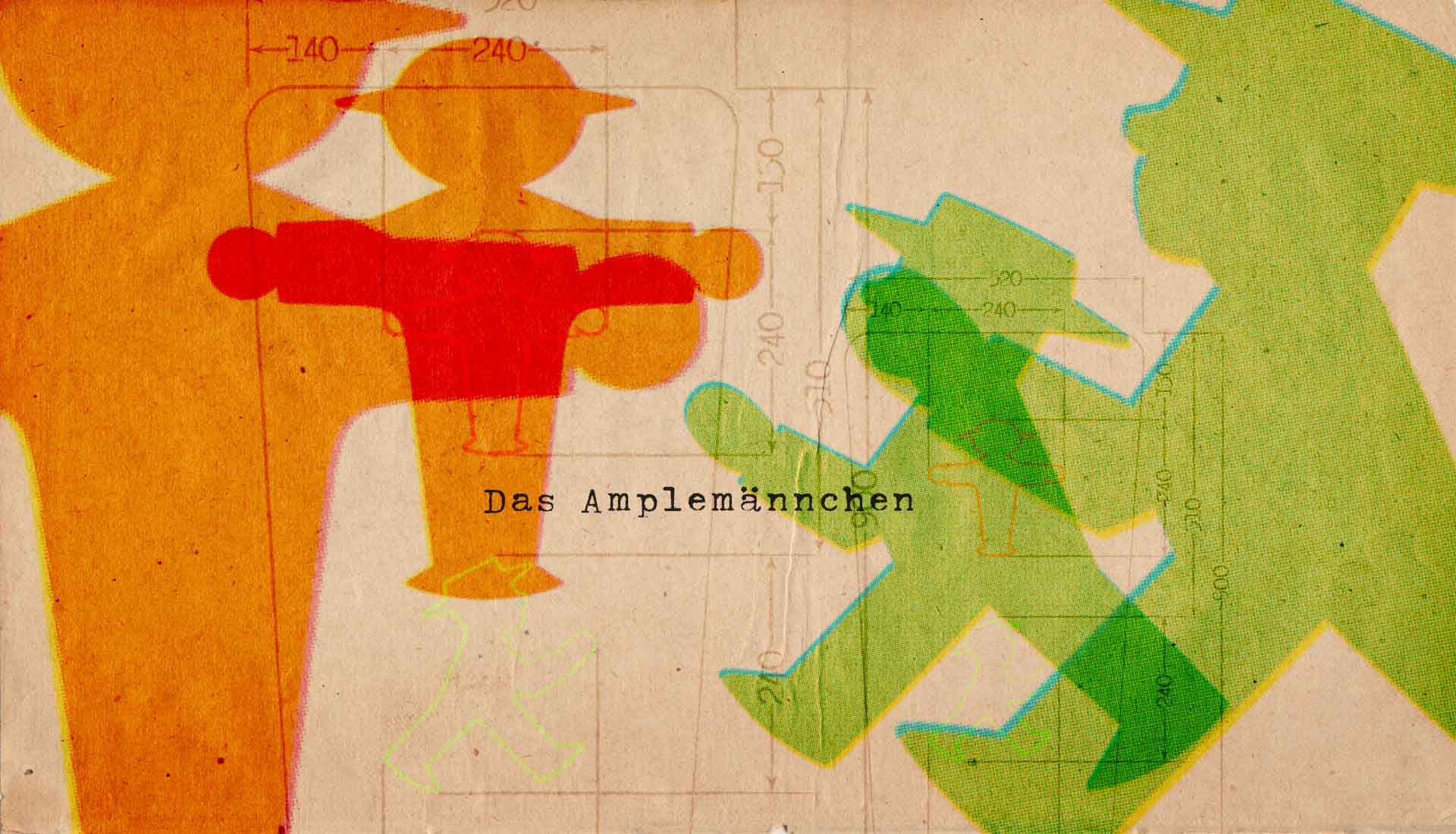
reetings from Goslar in the Harz mountains! The medieval town of Goslar is an important historical city as it demonstrates 1,000 years of mining culture. For hundreds of years it was a prosperous silver mining town and the rich ore deposits in this area strongly shaped the development of Goslar.
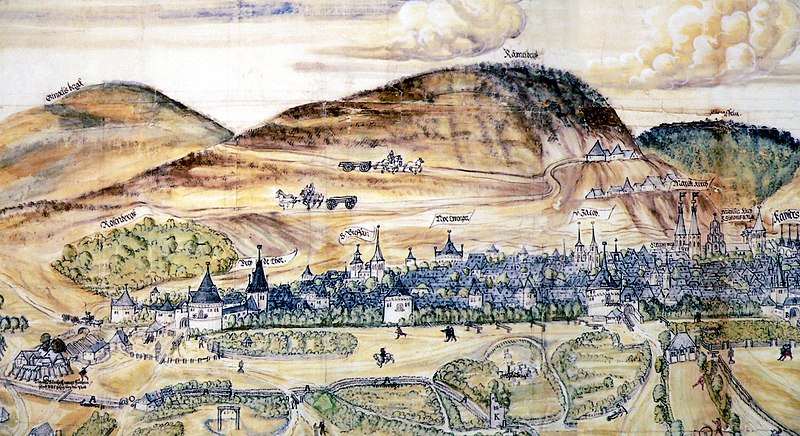
The medieval Goslar is characterized by an exceptionally large number of half-timbered houses built between the 15th-19th centuries. In fact, the town has the largest number of old houses in Germany, 1800 of them! The charming town, with its narrow streets, extends beyond the mighty towers of the Romanesque church, the Imperial Palace, Town Hall, and city fortifications, as well as the large number of stone medieval houses – called Bowers – built in the 12th century. The Imperial Palace is the symbol of Goslar and has one of the largest halls from the Middle Ages.
Along the Gose and Abzucht streams there are more than 40 locations where over the last 1000 years water was used to power mills. Today only one mill at the “Klapperhagen” still creaks away on the waterway. It was built in the early 16th century and served later as both a cement- and a leather tanning mill.
The historic Gildehaus Kaiserworth has stood on the market square since 1484 and is now a hotel. This former building of the Gewandschneider or “Worthgilde” was built in 1494 on the foundations of the first guild house from 1274. The impressive building – with its arcades and console figures – testifies to the wealth of the owners and the city at that time. In the niches between the windows of the upper floor are baroque wooden figures of eight emperors. During the reign of the depicted emperors, Goslar was founded and reached the extent of today’s old town – almost unchanged for 700 years.
Die Marktkirche (the market church; “ecclesia forensis”) had its first mention in the documentation in 1151. The origins of today’s church building date back to the 11th century, where a predecessor building must have stood and was dedicated to St. Nicholas of Myra. The original church was probably a Romanesque, three-aisled pillar basilica. From this comes today’s west part of the Marktkirche, which has two towers. The two towers are almost the same height – the north tower in its present form was built in 1593 after a fire in 1589. In 1844, the church roof and both towers fell victim to a major fire, as did the bells.
In 1254 the Great Holy Cross was founded as an almshouse for the town’s needy. Here the poor, ill and orphans, as well as pilgrims and other travelers, could receive food and shelter.
Today, it still serves its original purpose – 750 years after its founding. It provides modern accommodations for the elderly in an adjoining wing. The small individual rooms, built into the main hall of the 13th century building in the Baroque period, are now used as studios and shops for artisans.
The Imperial Palace, built between 1040 and 1050 during the reign of Heinrich III, is a unique secular architectural monument. For more than 200 years, German and European history was made here. In the St. Ulrich Chapel, a stone sarcophagus with the figure of Heinrich III on the cover holds the gold capsule containing the heart of the emperor, who died in 1056. (!) In the late 19th century both the Palace and the Chapel were renovated extensively and the interior of the Palace upper hall was decorated with murals.

Before Christianization took place, people of this area believed in heathen gods like Wodan and Walburga and celebrated the end of winter and coming of spring with bonfires and dancing. And even after they had been christianized they secretly continued their rites. Walpurgis then was named after the legend of St. Walburga (a monastery nun in the 8th century) and celebrated on the day of her canonization.
Every April 30th the famous Walpurgis festival takes place on Goslars historic market square. People dress as witches and warlocks and dance and drink to welcome spring. It is believed that on that day witches ride on broomsticks, forks, goats, and other things to places of old pagan sacrifices in the Harz mountains. Today, Walpurgis is celebrated in nearly all the towns of the Harz region.








